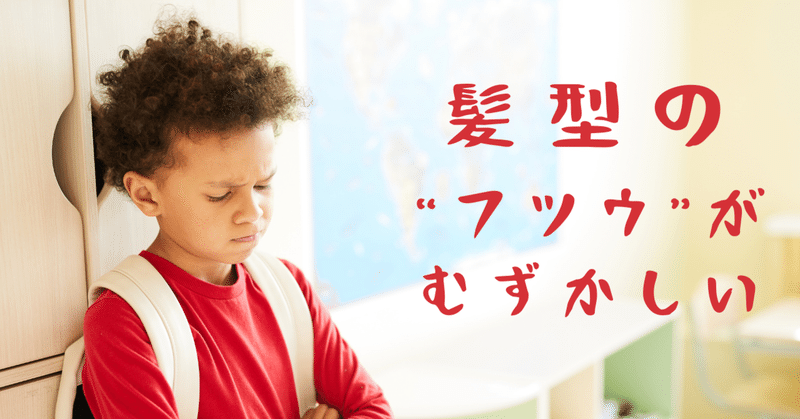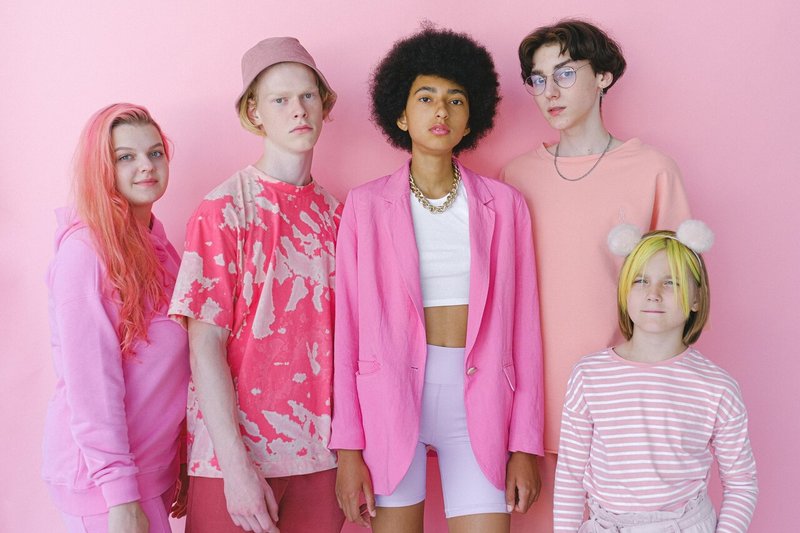
【カビルのつぶやき】「髪型のフツウってなんだろう?」
はじめに
みなさんこんにちは、ネパール出身のカビルです。
カタリバのRootsプロジェクト(海外ルーツの高校生支援)で活動しています。
突然ですが、あなたは好きな髪型がありますか?
ロングヘアが好きですか?ショートヘアが好きですか?
ネパールではひげが普通なので、髪型もですが、私はヒゲを生やしてみたいと密かに思っています。
しかし、私が望むスタイルを日本の学生生活で実現することは、想像以上に難しいことなのかもしれません。なぜなら、外見を含むあらゆる校則は生徒手帳に詳細に書かれていて、日本ではその校則を厳守することが求められているからです。
学校によっては自由度の高いところもありますが、小学校や中学校、ほとんどの高校では髪型に厳しいところが多いようです。
日本でよく見かけるルール
・髪の毛の色は自然な色のみ可能
・エクステの禁止
→普通はヘアエクステンションが禁止されているので、事前に取り忘れが
ないように十分注意していなければなりません。
・ヘアジェルなど、整髪料の禁止
・長髪の禁止(男子生徒)
→髪の毛が耳に触れないようにして、前髪の長さが視界を遮らないようにしなければなりません。
・派手なものは一切禁止。
→ヘアピンなど何でも派手なものはだめです。
もし新しい髪型を試してみたいという学生は、事前に校則を調べておくことをおすすめします。(私の実体験も、後ほどお話させてください・・・)
「その校則って何の意味があるの?」各地で起きている大討論会
日本ではツーブロックという髪型が流行っていますが、これは校則で許可されているでしょうか?残念ながら校則違反と定めるところが多く、この話題については大きな議論が行われています。
この「ツーブロック禁止」を筆頭に、社会からみると厳しすぎると感じたり理不尽と思える校則のことを「ブラック校則」と称し、ニュースで取り上げられたり映画にもなっています。
たくさんの人が「この校則って本当に必要かな?」と思えるルールが、なぜまだ存在するのでしょうか。
このテーマでお勧めのビデオがありますので、ぜひご覧ください。
ビデオの中で語られていますが、ツーブロックについて多くの人が不快に感じているわけでもないのに禁止されています。なぜそのようなルールがあるのかある議員が教育長に尋ねたところ、「外見のせいで学生がトラブルや事故に巻き込まれる可能性があるから」という答えが返ってきました。完全にそのようなことがないとは言い切れませんが、昔からあるから、他の学校もそうだからという理由で、他にもこのようなルールが存在します。
先生方はこの問題をどう考えているのだろうか?
個人的には、先生もきっと疑問に思うルールを守らせることはしたくないんじゃないかなと思います。先生方も、同じルールに縛られているのではないのでしょうか。
確かではありませんが、すべての問題は先生方の力の及ばないところにあると思います。しかし、問題に直面し、生徒と議論し、時には親からも規則について質問され、何かを答えなければならないのは先生方です。もっと先生方とこの問題について話すことができたらと思います。
この記事を書いていたところ、カタリバの他の活動で、まさに校則をテーマにしたものがあるよと教えてもらいました。
私の話と、思うこと
私が日本の中学校に入学して数ヶ月後のことです。来日したばかりで、私はまだ日本での新しい生活と学校に慣れていませんでした。
髪の毛が目に入ってきたので、髪の毛を切る必要がありました。そこで、髪を切るだけのお店に行きました。当時、私は日本語が話せなかったので、携帯電話で自分の希望を日本語に翻訳して、それを美容師さんに見せました。”ショートで私に似合うものを ”と。
当時の私は髪型を気にしていなかったので、手入れが面倒でなければ、また衛生的であれば何でもいいと思っていました。彼は私の髪型を上手に仕上げてくれ、私はとても満足しました。
次の日、私は学校がありクラスに行くと、英語で話すことのできる友人が、私の髪型は絶対にダメだと言うのです。そして、その日は検査の日でもあります。検査の間は不安でしたが、幸いにも髪型はあまり目立たなかったようです。その後私は安心していたのですが、友人はどうして私の髪型が許されたのかと不思議そうな顔をしていました。
この経験から私は、美容師さんに「私は学生なので、ガイドラインの範囲内でお願いします」と必ず伝えるようになりました。さもなければ、次の日に「お直し」のためにもう一度来ることになるからです(場所によっては無料でやってくれるところもあるようです)。
当時、私は来日したばかりで、日本のルールや文化について、全体的に知識がありませんでした。なので、校則を「郷に入っては郷に従え」の精神で、受け入れました。しかし、これは、私がたまたま自分の見た目にそれほどこだわっていなかったので、できたこととも思うのです。
ファッションや化粧品が大好きなクラスメートの気持ちを想像すると、きっと、校則の制限がなければ、学校生活をもっと楽しんでいたのではないでしょうか。人によっては、アイデンティティ・自己表現・自信にとって、外見やファッションが大きな役割を果たしているはずです。大事にしていることは人それぞれなので、それに対する外からの制限は、正答な理由がある分だけに抑えようとしてみても、よいのではないでしょうか。
社会の価値観も変わってきている今、「ブラック校則」の服装規定は、世間一般の、見た目・多様性・自己統治などに関する考えと、少しズレてきている可能性もあると思います。
まとめ
日本では、場によって、ドレスコードや見た目の規定について、長い説明を受けることがあります。何かあったときのために、自分で調べて準備しておくことが大切です。
ですが日本の人たちは、相手が日本の文化や習慣に慣れていないことを知れば、ルールを知らないことを理解し、その背景を一生懸命説明してくれます。
これは、私がずっと好きだった日本の方々の特徴ですし、これを読んでくださっているみなさんにも、ぜひそうしてもらえたらと思っています。
読んでくださりありがとうございます。

What constitutes "acceptable hairstyles" at Japanese schools?
Introduction
Hi, this is Kabir from Nepal, living in Japan. I work with NPO Katariba's Roots Project (project to provide support for high school students with foreign roots).
Hairstyle is an important part of one's appearance. Do you have a preferred style? Long or short? Aside from hairstyles, in Nepal, many grow a beard - so I secretly am looking forward to growing a full beard someday.
However, it may be difficult to realize my desired style in Japanese school life, much more than you may think. School rules including ones regarding the students' appearance is written in student notebooks, specified to nitty-gritty details, and students are expected to strictly obey them.
Some schools are more flexible than others, but usually, elementary schools and middle schools, as well as most high schools have strict rules on their students' hairstyles.
Common Japanese school rules regarding hairstyles
・Hair color must be "natural"
・Hair extensions are prohibited
As this is a common rule, one must be careful not to leave them in at school.
・Hair gels and styling products are prohibited
・Long hair is prohibited for male students
Hair cannot touch the ears, and bangs must be kept so they don't block the view.
・Overall, hair styles must not be flashy
Students may not be able to use accessories such as hair pins.
If students wish to try new hairstyles, I recommend checking the student rules first. Let me share my experience with it later too.
Huge debate around "excessive" school dress codes
In Japan, "shaved sides" is a hot trend for men. Unfortunately, many schools prohibit this style for boys, and this has started a huge debate regarding such rules that seem too strict or without good reason. Such rules (called "black dress codes") has become a hot topic in the Japanese society, making on the news and even movies.
So why are there rules that many find questionable?
Below is a video on the topic that I recommend.
As mentioned in the video, not many people feel in any negative way about "shaved sides". When a politician questioned why these rules exist to the superintendent, the answer he/she received was “to prevent students from getting into troubles and accidents, due to their appearance”. While something like that may happen, there are other rules like this, that exist just because they have existed for a long time and other schools have similar sanctions, etc.
What do the teachers think about this issue?
Personally, I suspect that teachers do not enjoy having to enforce the rules that they find questionable, yet they too are bound by them.
While I cannot be sure, I suspect that the whole matter is out of their power. Yet, the teachers are the ones that have to enforce the rules, convince the students and sometimes even the parents. Dialogues with the teachers are critical, going forward.
While writing this post, I learned that there is another project within Katariba, that aims to create room for such dialogues regarding dress codes at schools. Please see below.
My story and opinions
A few months after I had enrolled in a Japanese middle school, I was still adjusting to my new life in Japan and a new school. My hair was getting in my eyes so I went to a barber to get it cut. I could not speak Japanese at the time, so I just translated my request on my phone, and showed it to my barber. “Short and something that will suit me.”
I did not care about my hair at the time, and could go with anything that was easy to maintain and hygienic. He did a good job with my haircut and I was very satisfied.
The next day, I get to my class, and an English-speaking friend warned me that my haircut was definitely not allowed. It happens to be the inspection day too. I was anxious during the inspection, but thankfully the haircut apparently was not too obvious. So I passed, while my friend kept on wondering how I got away with that haircut.
From then on, I made sure to tell my hairdresser that I am a student and to please stay within the guidelines, which is my recommendation for other students who come from different countries to Japan. Otherwise, you may have to return the next day for a “fix-up” (provided for free in some hair salons).
Back then, I was still new to the country that I did not know the rules of norms in Japan. Therefore, I accepted the dress code as just how things are here, without any objections, along with everything else. However, this was the case as I happened to be not so particular about my appearances or trends.
As I try to understand the feelings of my classmates who were into fashion and cosmetics, I’m sure they would have enjoyed their school lives much more if they weren't restricted. I know that one's looks play a huge role in some people's identity, expression and confidence. With everyone having different priorities and values, I believe that restrictions on such expressions are best kept minimum, and only for good reasons.
In the case of dress codes, I think some of them may be outdated and not in line with how the world is starting to value appearances and their roles in self expression, as well as diversity and self-governance.
Conclusion
In Japan, you may receive a long explanation on the restrictions on what to wear or how to appear, according to where you are and what you are participating in. It is important to do your own research and be aware that there may be such rules.
However, usually Japanese people are understanding when they realize someone is unfamiliar with the societal rules, and do their best to explain them. This is a trait of the Japanese people that I have always been fond of, and I hope my readers can be on the giving or receiving ends of such treatment.
